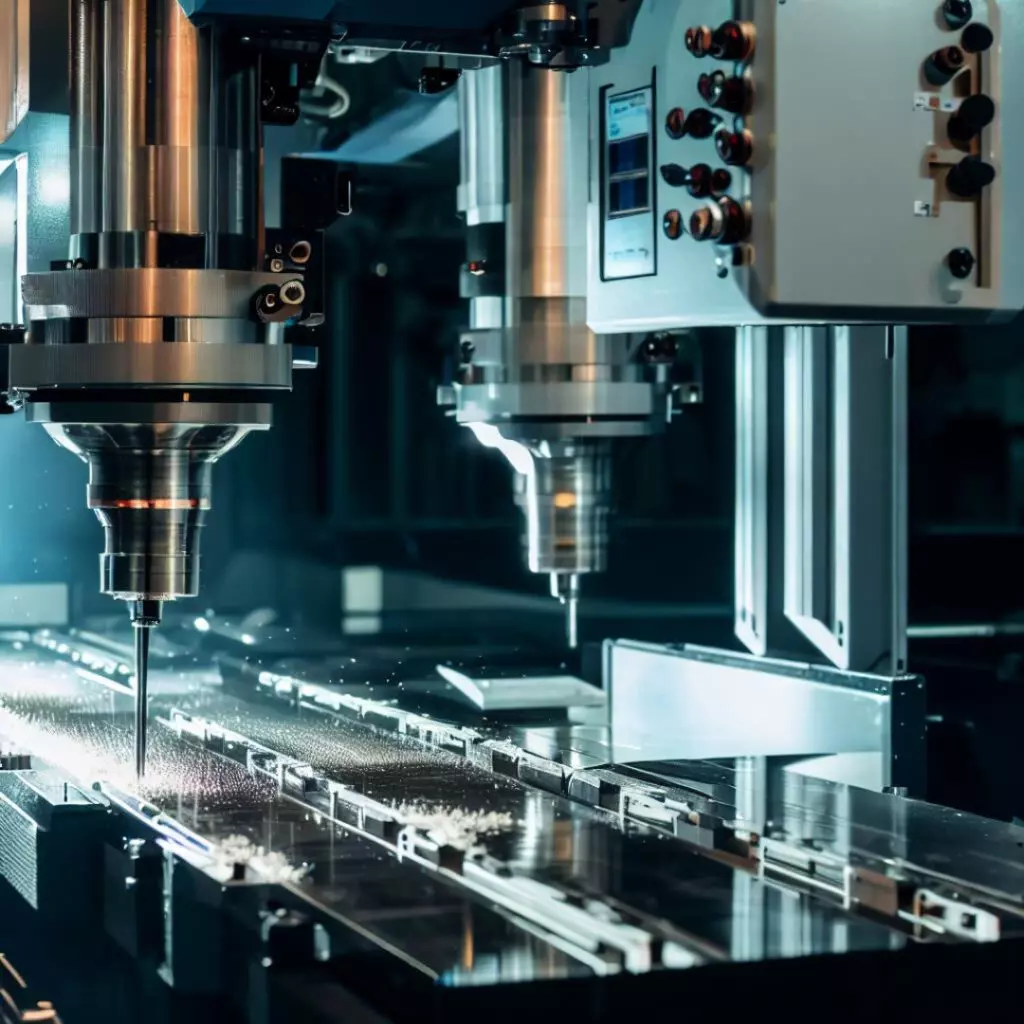CNC Milling Machines
CNC milling machines are highly versatile pieces of equipment that are used in a range of industries to produce precision components. These machines have revolutionized the way that parts are made, allowing for faster production times, greater accuracy, and reduced costs.
How do CNC milling machines work?
At their core, CNC milling machines are automated cutting tools that use computer numerical control (CNC) to execute pre-programmed sequences of movements. These movements are used to control the cutting tool as it removes material from a workpiece to create a desired shape or form.
The cutting tool is typically a rotating end mill that is mounted on a spindle. The spindle is moved along multiple axes by a series of motors, which are controlled by the CNC software. The software allows for precise control over the movement of the cutting tool, ensuring that it follows the desired path and removes material from the workpiece in a controlled manner.
Types of CNC milling machines
There are many different types of CNC milling machines, each with its own unique features and capabilities. Some of the most common types include:
Vertical milling machines
Vertical milling machines are the most common type of CNC milling machine. They are typically used for smaller-scale projects and are ideal for producing parts with complex shapes and features.
Horizontal milling machines
Horizontal milling machines are designed for larger-scale projects and are ideal for producing parts with long, straight cuts. They are often used in the production of large metal parts and components.
3-axis milling machines
3-axis milling machines are the simplest type of CNC milling machine. They are designed for producing parts with simple shapes and features, such as flat surfaces and simple holes.
4-axis milling machines
4-axis milling machines are designed for producing parts with more complex shapes and features. They allow for the cutting tool to be moved along four axes, which gives greater flexibility and precision.
5-axis milling machines
5-axis milling machines are the most advanced type of CNC milling machine. They allow for the cutting tool to be moved along five axes, which gives ultimate flexibility and precision. These machines are ideal for producing complex parts with intricate shapes and features.
Benefits of using CNC milling machines
There are many benefits of using CNC milling machines, including:
Greater accuracy
CNC milling machines are capable of producing parts with a high degree of accuracy. They are able to follow precise instructions and can produce parts to a tolerance of just a few microns.
Faster production times
CNC milling machines are able to produce parts at a much faster rate than traditional manual machining methods. This allows for faster turnaround times and increased production capacity.
Reduced costs
CNC milling machines are able to produce parts with a high degree of consistency, which reduces the likelihood of errors and the need for rework. This can result in significant cost savings for manufacturers.
Applications of CNC milling machines
CNC milling machines are used in a range of industries, including:
Aerospace
CNC milling machines are used to produce precision components for the aerospace industry. These components must be made to extremely tight tolerances, and CNC milling machines are able to achieve this level of precision.
Automotive
CNC milling machines are used to produce components for the automotive industry, including engine blocks, transmission components, and suspension parts. These components must be made to high standards of accuracy and consistency, and CNC milling machines are able to meet these requirements.
Medical
CNC milling machines are used to produce medical components, such as surgical implants and prosthetics. These components must be made to exact specifications, and CNC milling machines are able to achieve this level of precision.
Conclusion
CNC milling machines are incredibly versatile pieces of equipment that are used in a range of industries to produce precision components. They offer a range of benefits, including greater accuracy, faster production times, and reduced costs. With the ability to produce parts with a high degree of precision and consistency, they have revolutionized the way that parts are made and will continue to be an essential tool in modern manufacturing.








You must be logged in to post a comment.